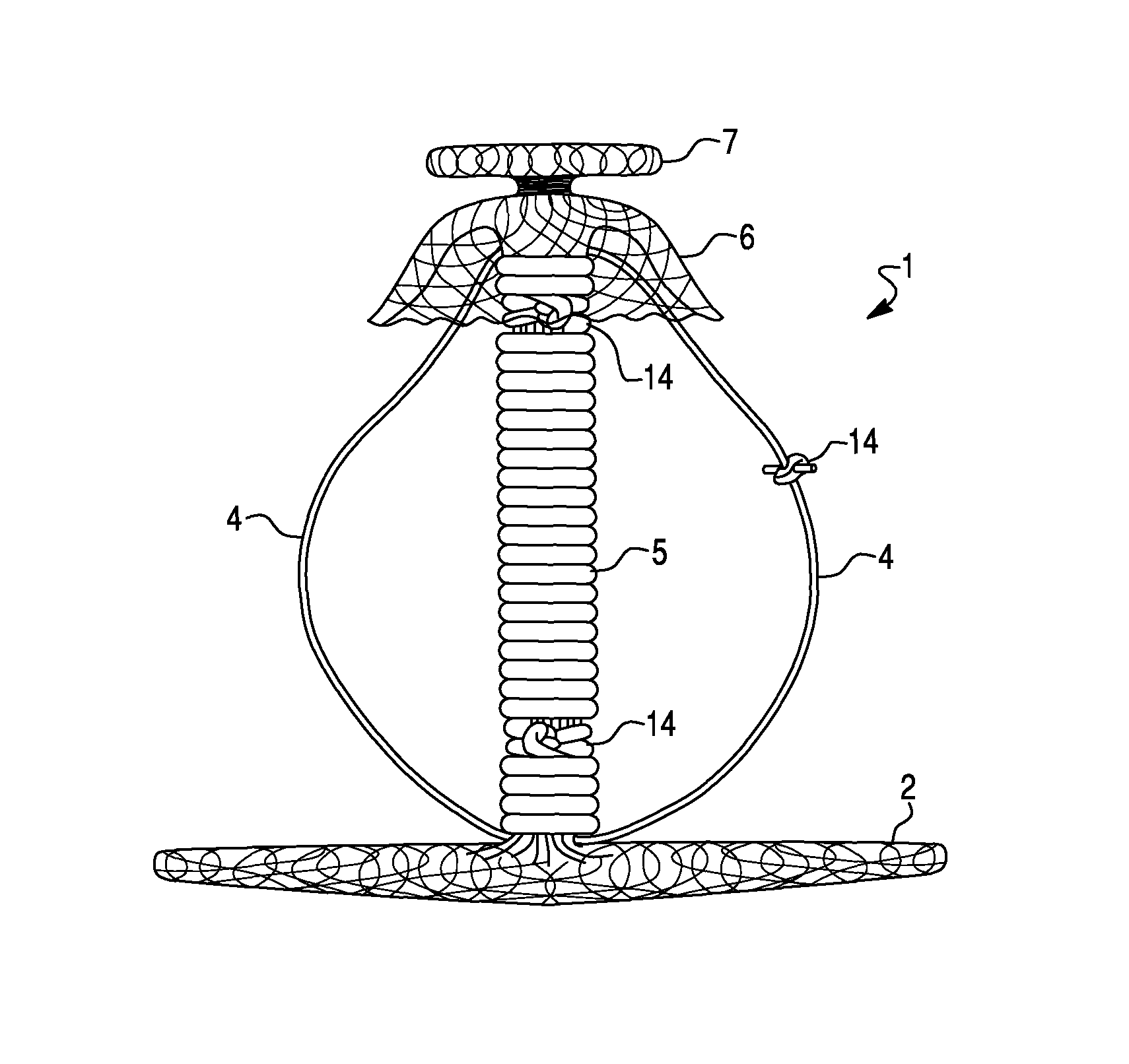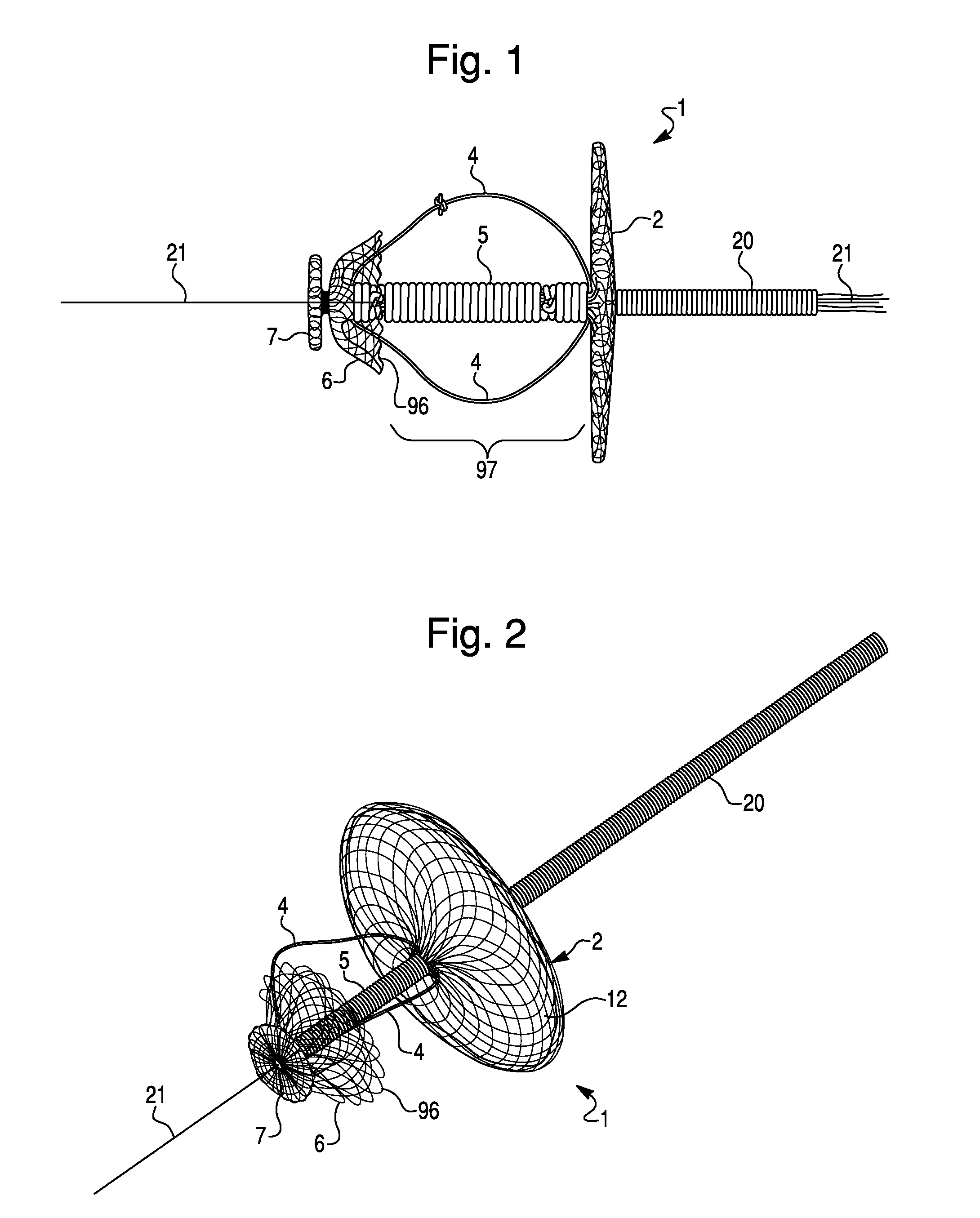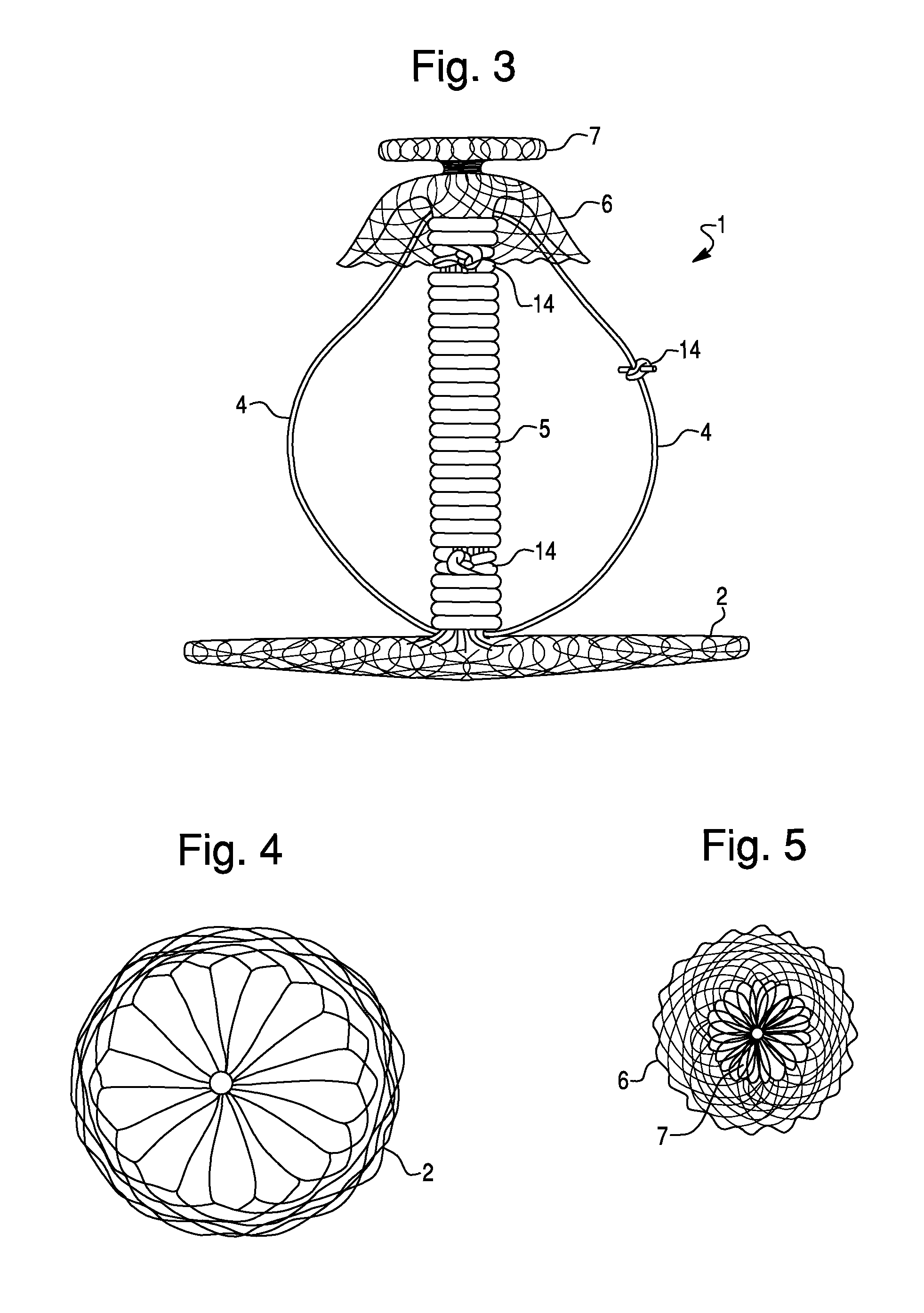Left atrial appendage occlusion device
a technology of appendage occlusion and left atrial valve, which is applied in the field of occlusion devices, can solve the problems of blood clot formation, high risk of stroke, and patients using anticoagulants, and achieve the effect of constant cross section
- Summary
- Abstract
- Description
- Claims
- Application Information
AI Technical Summary
Benefits of technology
Problems solved by technology
Method used
Image
Examples
working example
Non-Limiting Working Example
[0081]Two canine LAA occlusion studies were conducted using the protocol reported in 2002 by Nakai et al, in which 25 dogs were implanted. All results of the studies were presented to peers at international cardiology conferences. The Nakai study was conducted with a grossly different device from that of the LAA devices disclosed in the present application. Canines were tested because the LAA of canines is nearly identical to the LAA of humans. Canines have been used in a surgical model for occluding the LAA (14 canines that underwent thoracotomy for placement of an external LAA “clip” were described by Fumoto et al in 2008).
[0082]The aim of the first canine LAA occlusion study was to assess safety, feasiblity, and efficacy of implantation of a LAA occlusion device disclosed in the present application that does not include a self-centering element. The aim of the second canine LAA occlusion study was to assess safety, feasiblity, and efficacy of implantat...
PUM
 Login to View More
Login to View More Abstract
Description
Claims
Application Information
 Login to View More
Login to View More - R&D
- Intellectual Property
- Life Sciences
- Materials
- Tech Scout
- Unparalleled Data Quality
- Higher Quality Content
- 60% Fewer Hallucinations
Browse by: Latest US Patents, China's latest patents, Technical Efficacy Thesaurus, Application Domain, Technology Topic, Popular Technical Reports.
© 2025 PatSnap. All rights reserved.Legal|Privacy policy|Modern Slavery Act Transparency Statement|Sitemap|About US| Contact US: help@patsnap.com



